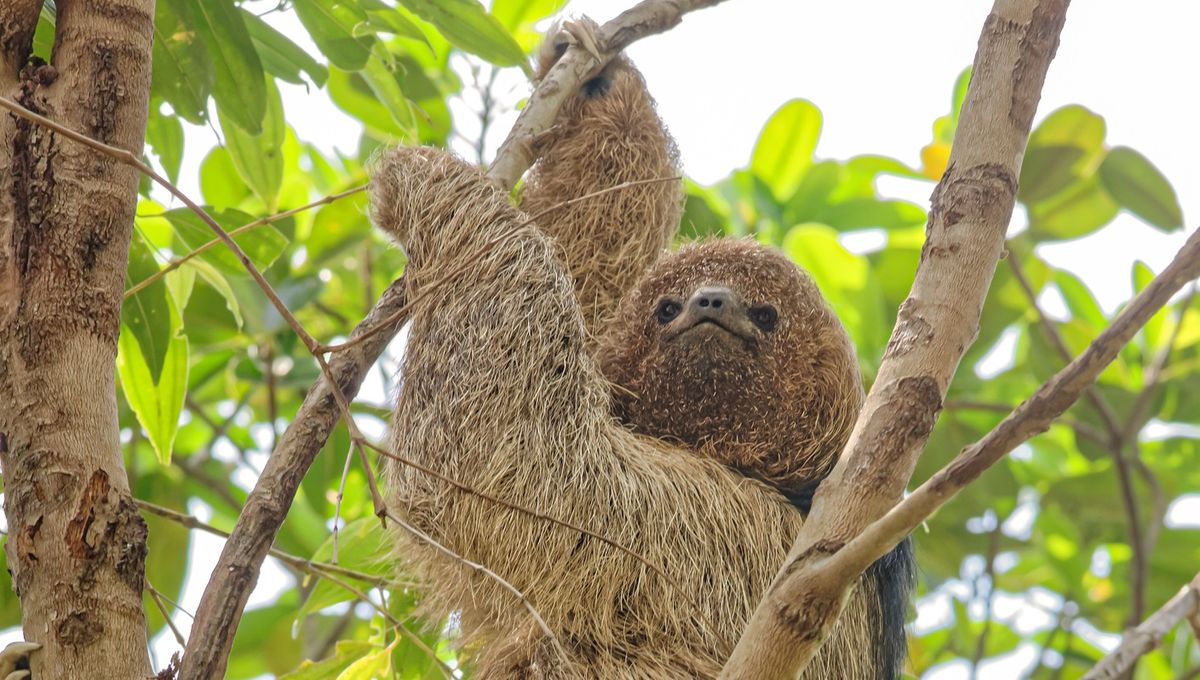
The Brazilian Atlantic Forest is home to two separate species of sloth with heads that look just like coconuts, new research reveals. Found in a small region of this coastal forest, maned sloths were previously thought to represent a single species – but it turns out that those in the northern section of this range are genetically distinct from those in the south.
While two coconut heads may be better than one, the divergence between these sloth species actually heightens the challenges faced by conservationists. “With the new taxonomic arrangement proposed here, the geographic distribution of each species becomes relatively smaller,” explain the authors of a new study, highlighting the need for extra protection.
The maned sloth (Bradypus torquatus) was first described in 1811 – although British zoologist John Edward Gray claimed to have discovered a second species in 1850, which he named Bradypus crinitus. His assertions were later dismissed, with taxonomists agreeing that the specimen described by Gray was in fact B. torquatus, although the new study proves that B. crinitus does indeed exist.
The researchers conducted a morphological analysis of 24 maned sloths, some of which came from the northern states of Bahia and Sergipe while the rest were from Rio de Janeiro and Espírito Santo in the south. Compared to their northern counterparts, southern sloths had flatter skulls, rounder jaws, and wider cheekbones.
Genetic analysis of 55 maned sloths then revealed “substantial genetic divergence” between the southern and northern groups. Studying a group of collectively inherited mitochondrial genes, the researchers identified 86 mutational steps separating the two populations, and calculated that this divergence occurred around 4.24 million years ago.
“Our integrative approach demonstrates that two species of maned sloth can be recognized: the northern maned sloth (Bradypus torquatus) occurring in the Brazilian states of Bahia and Sergipe, and the southern maned sloth (Bradypus crinitus), occurring in Rio de Janeiro and Espirito Santo states,” write the researchers.
The two species’ ranges are separated by the Rio Doce, which also acts as a dividing line between related species of mice and capuchin monkeys. However, the researchers are unable to say whether the river provides or physical barrier or if contrasting climatic and geographical features on either side of this marker are responsible for these phylogeographic breaks.
However, they do note that the B. crinitus population on the southern side of the Rio Doce would have been restricted to a “small climatically stable refuge,” and that confinement to this limited area may have contributed to the separation of the two species.
“This separation was probably further aggravated by anthropogenic habitat fragmentation and deforestation in the Atlantic Forest. These processes potentially restricted the gene flow among the populations,” write the authors.
Worryingly, the researchers state that the habitats occupied by both species are “severely fragmented,” and that both are likely to be categorized as “threatened”.
The study was published in the Journal of Mammalogy.
[H/T: New Scientist]
Source Link: Coconut-Headed Sloth In Brazilian Jungle Is Actually Two Distinct Species